
Dolmabahce (Dolmabahçe Palace, Turkish name: Dolmabahçe Sarayı) is a magnificent 19th-century palace complex in Istanbul, which previously served as the residence of the Ottoman sultans.
Today the palace Dolmabahce is a museum where you can visit the palace garden, palace halls and rooms consisting of: the official public part "Selamlik" (Selamlık) with a Ceremonial Hall (Tören Salonu), Harem (Harem) or family part; as well as the clock museum and the Museum of Painting and Sculpture (Resim ve Heykel Müzesi).
The palace is located on the European side of Istanbul near the waters of the Bosphorus, on an artificial embankment - the site of the former bay where the ships of the Ottoman fleet stood, and which was filled with earth and turned into a garden of sultans with gazebos and a wooden summer palace called "Besiktas Palace" (Beşiktaş Waterfront Palace) even before the appearance of the Dolmabahce Palace. After that, the place was named "Dolmabahce", which means "Bulk garden" in Turkish.
View of Dolmabahce Palace from the Bosphorus
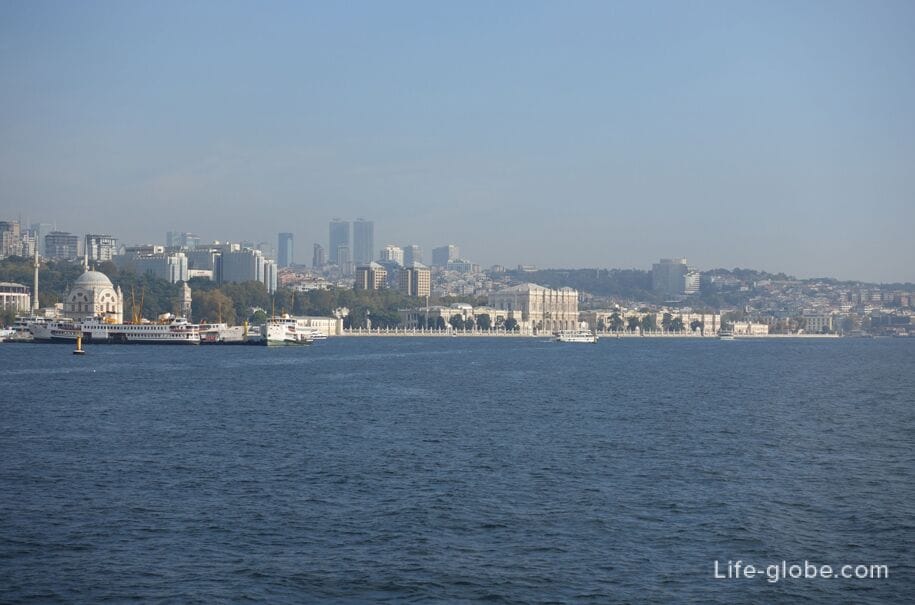

Dolmabahce Palace was built in 1843-1853 by order and for Sultan Abdul-Majid I, who considered the Topkapi Palace operating at that time to be out of date, and wanted to erect a new palace for permanent residence, which in architecture and luxury would not be inferior to the exquisite European residences of influential people.
For these purposes, the former sultan's summer complex on the shore of the Bosphorus was demolished and the Dolmabahce Baroque Palace was erected according to the project of architects from the Armenian Balyan dynasty.
In 1856, Sultan Abdul-Majid left the Topkapi Palace and settled in the Dolmabahce Palace, after which the palace became the official residence and administrative center of the Ottoman Empire.
In 1889, Abdul Hamid II moved his residence to the newly built nearby Yıldız Sarayı Palace, but his successors returned to Dolmabahce.
After the fall of the monarchy, Mustafa Kemal Ataturk, the founder and first president of the Republic of Turkey, settled in the Dolmabahce Palace. Ataturk lived and died on November 10, 1938 in the Dolmabahce Palace. After that, the 2nd President of Turkey Ismet Inenyu continued to use Dolmabahce as his official office.
In 1984, the former palace was opened to visitors as a palace museum.
Today, this beautiful palace in the Baroque, Rococo and neoclassical styles is one of the main and most visited sights of Istanbul.
It is one of the largest palaces and one of the most luxurious structures in Turkey. The palace has an area of 45,000 m2 (11.1 acres) and contains 285 rooms, 44 halls, 6 bathrooms (hamam) and 68 toilets.
The garden surrounding the palace offers beautiful views of the Bosphorus Strait.
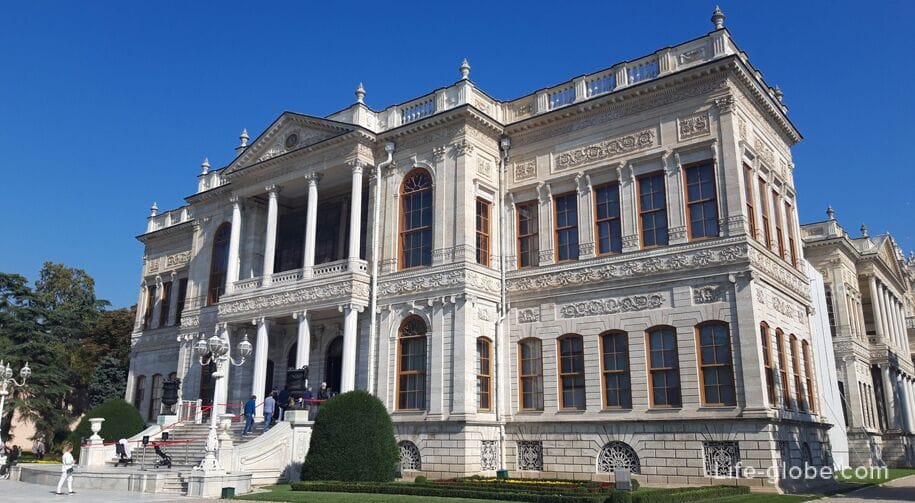
Dolmabahce Palace is surrounded by a garden, which, in turn, is surrounded by a wall (on the side of the ground) and a lattice (on the side of the Bosphorus) with gates.
Previously, the main entrance gate to the palace was the Sultan's Gate, which was used by the Sultan and his ministers.

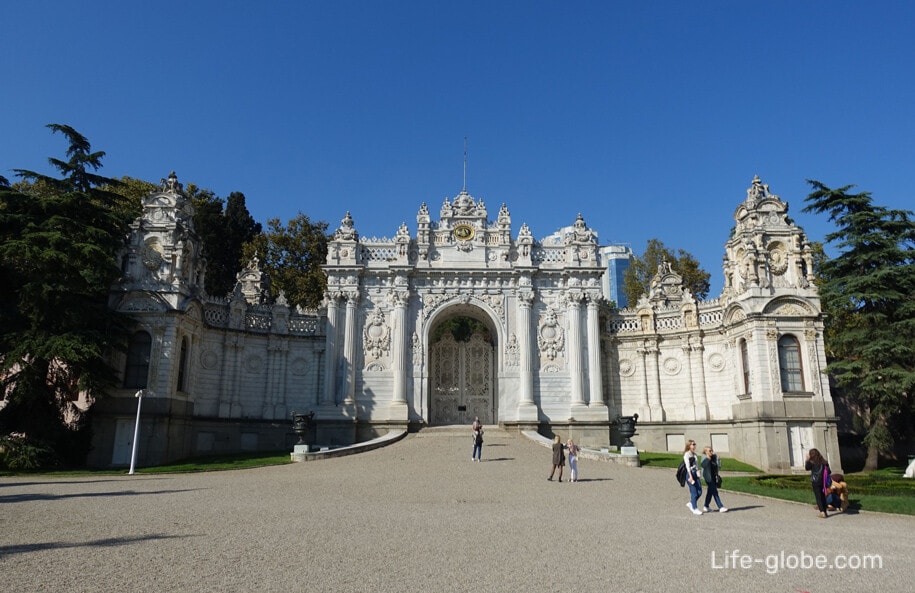
The Treasury Gate (Treasure Gate), through which visitors to the palace complex now enter, led and lead to the palace complex.
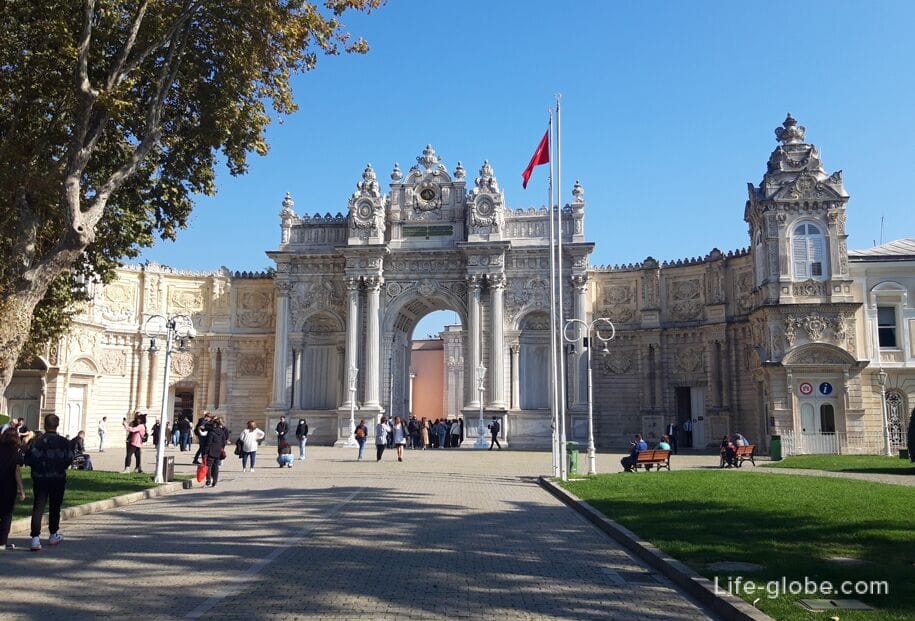
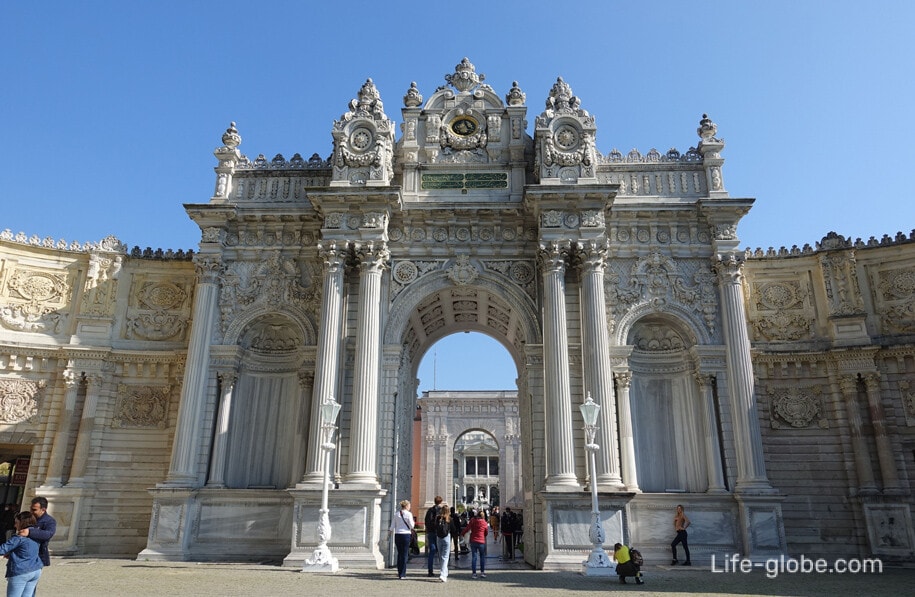
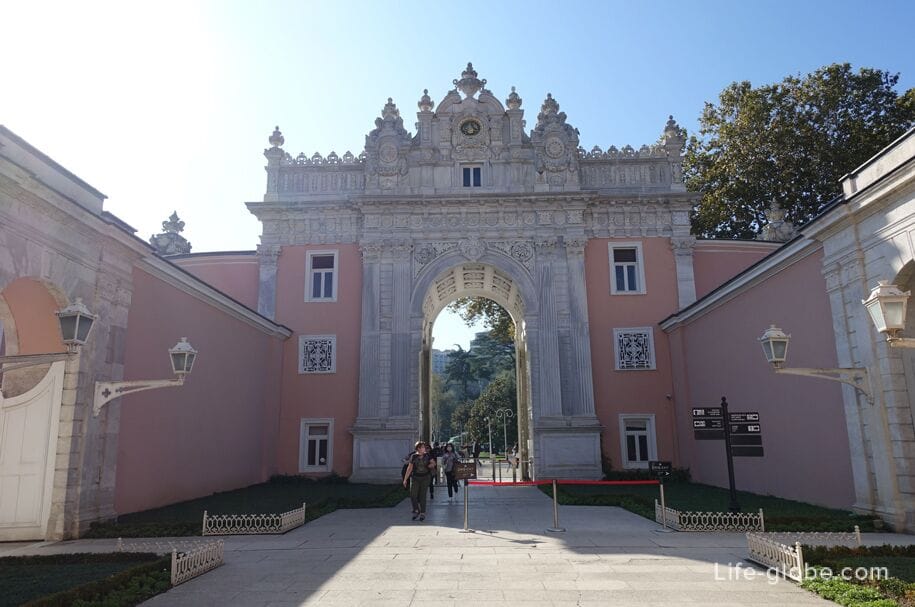
There is also an openwork gate on the side of the Bosphorus, intended for those who stayed in the palace from the water.
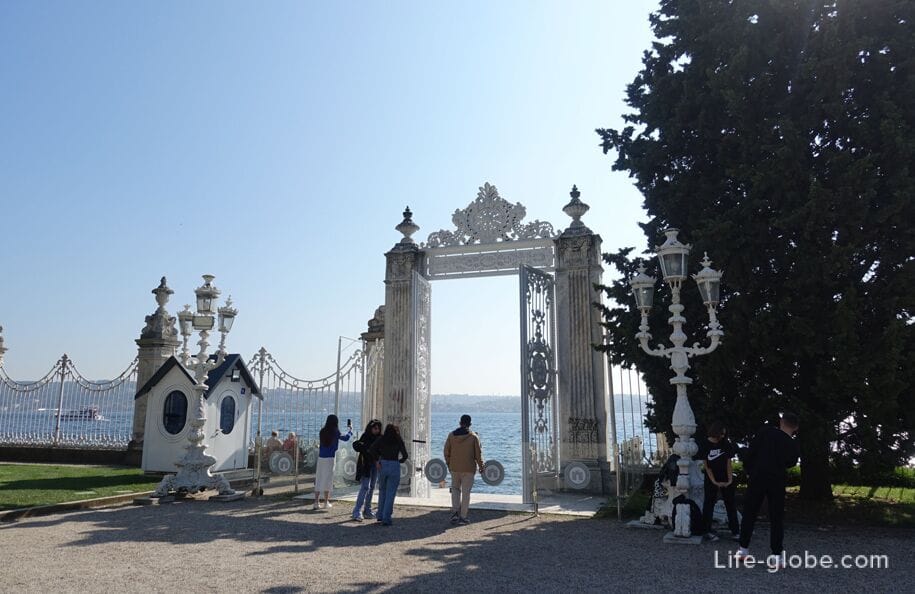
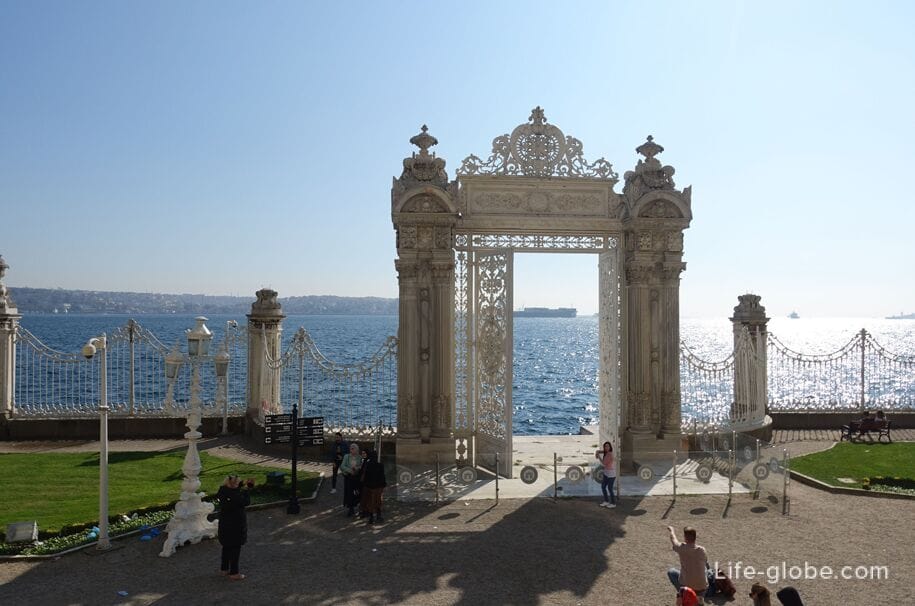
The palace is surrounded by a garden, which is divided into 4 sections: Hasbakhche (Selamlyk), Kushluk or Bird Garden, Harem Garden and the Garden of the Crown Prince. These gardens are arranged and classified according to the function of the surrounding buildings. For the design of the gardens, rare plants from the regions of Asia, Europe and America were selected and brought, which was designed to create a magnificent collection in garden design.
Today, the gardens are used for walks by visitors to the palace. They have paved paths and alleys, there are places to relax, pavilions, sculptures, fountains, lawns, flower beds and cafes. The gardens offer views of the Bosphorus.
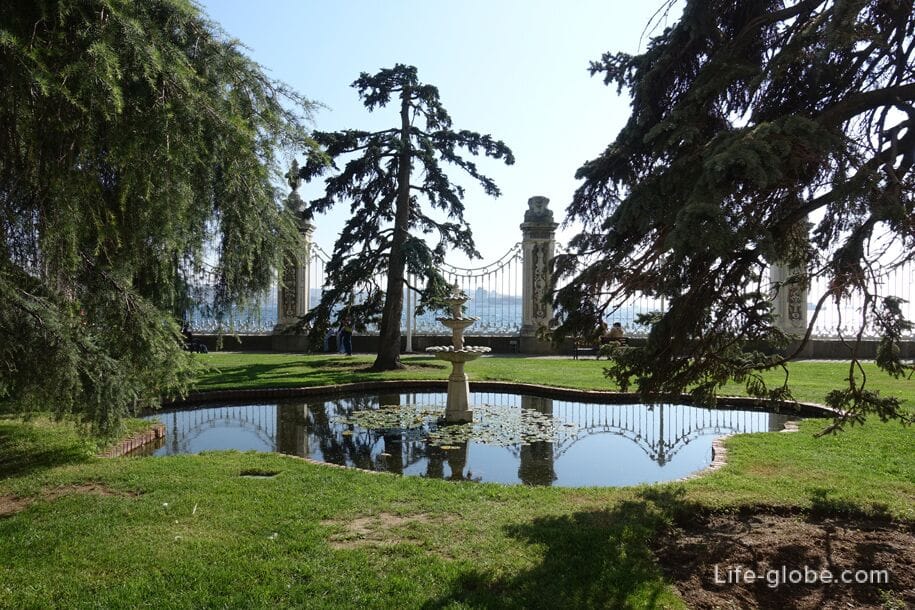




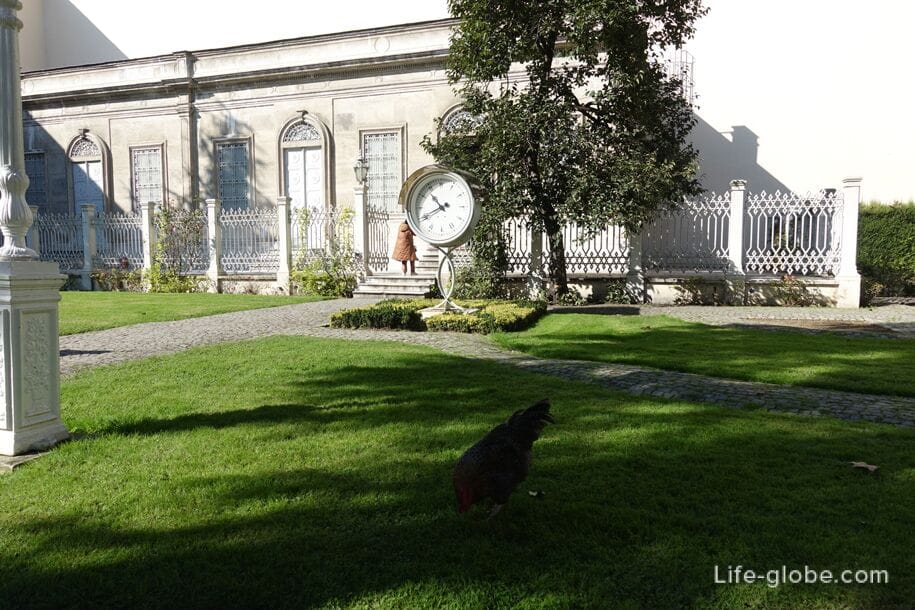
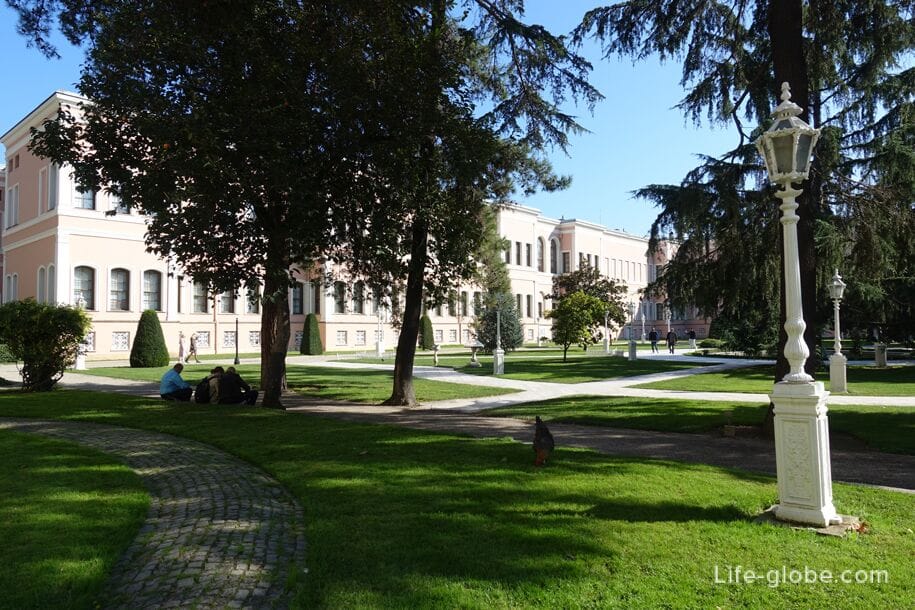
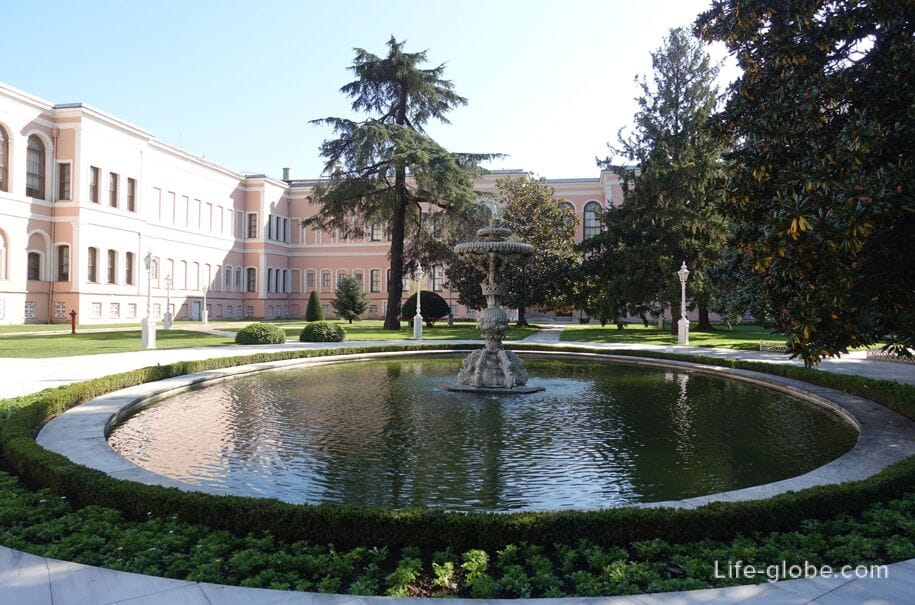
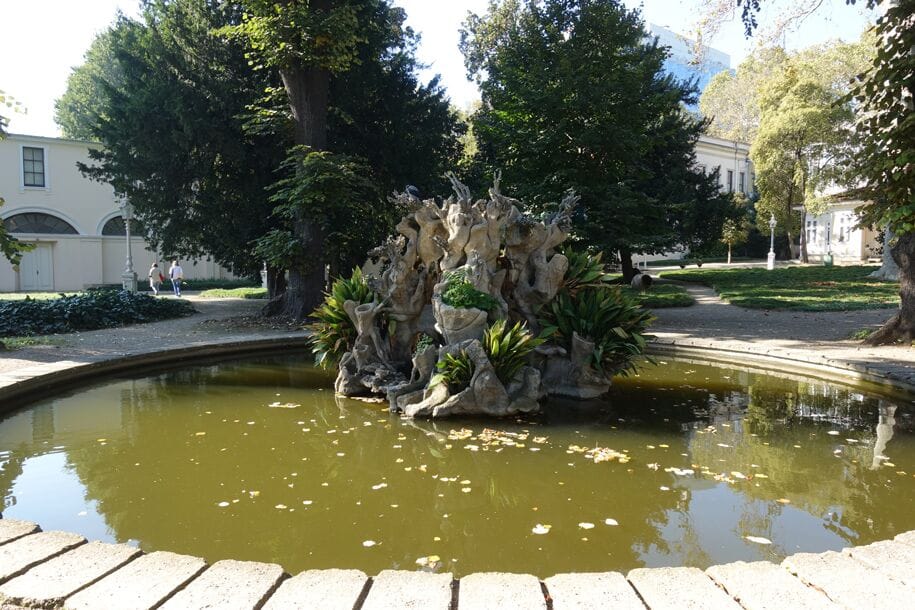
Hasbahce Garden, which is the largest garden of the palace, leads to the main entrance to the palace.
In the center of the garden there is a swimming pool with an elegant fountain in the shape of a swan, which was brought from the Yildiz Palace.
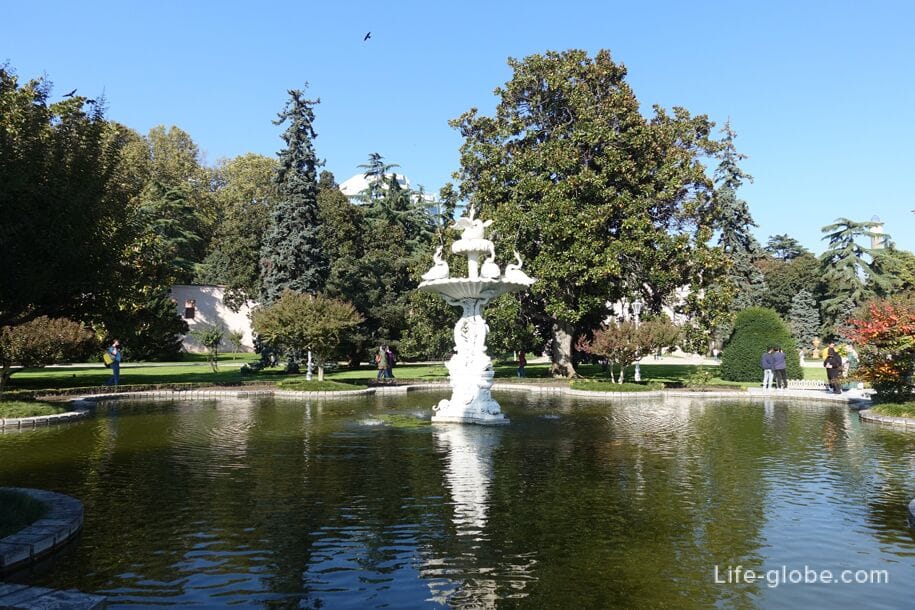

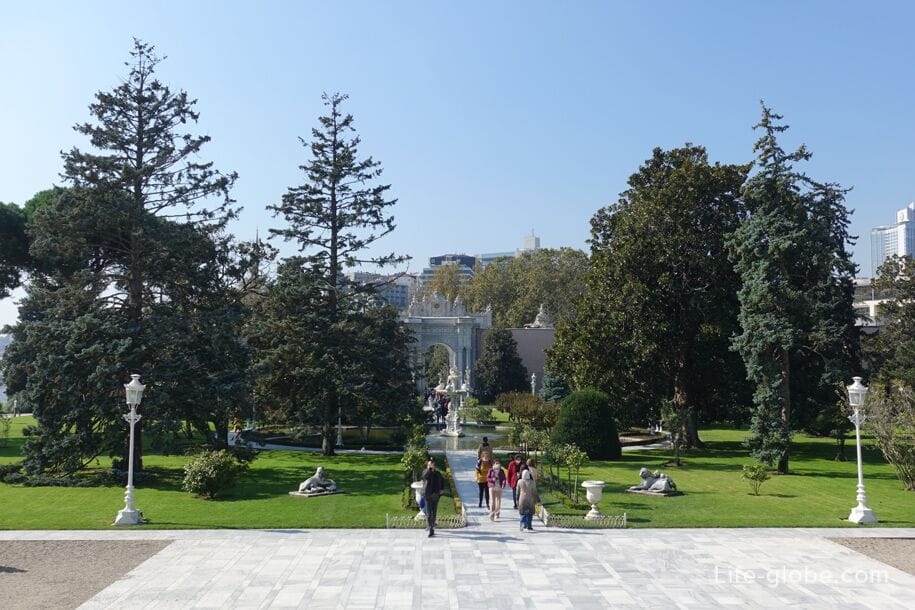
The magnificent Dolmabahce Palace stretches along the waters of the Bosphorus.

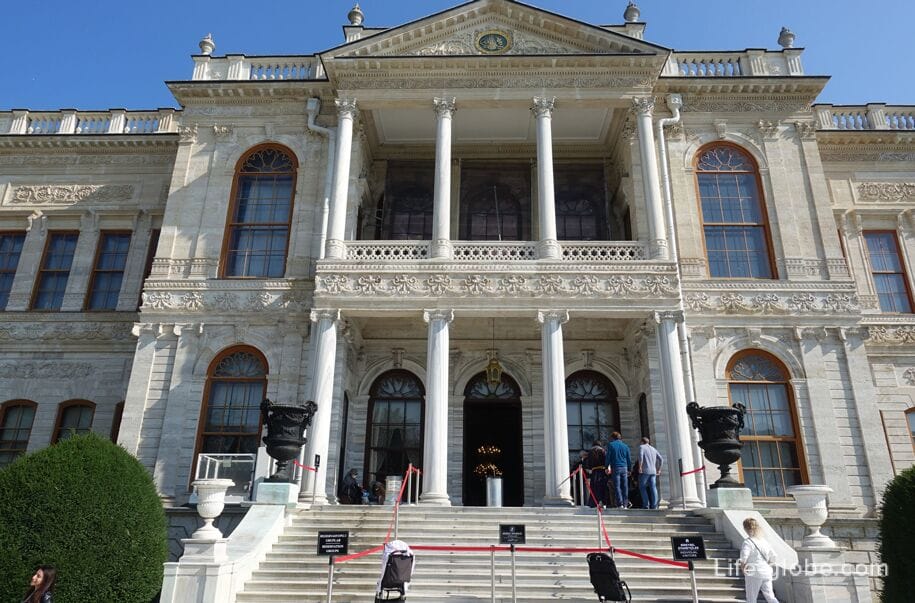

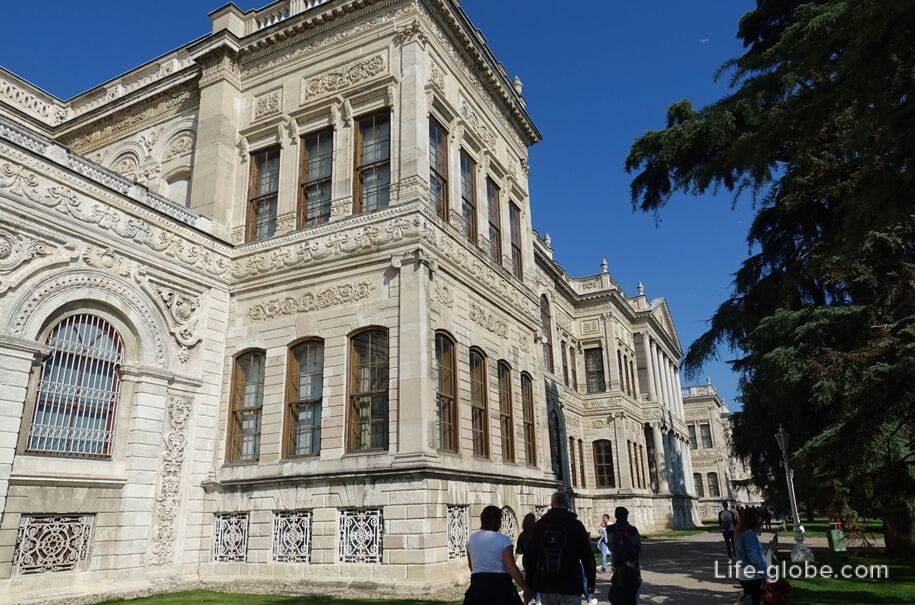
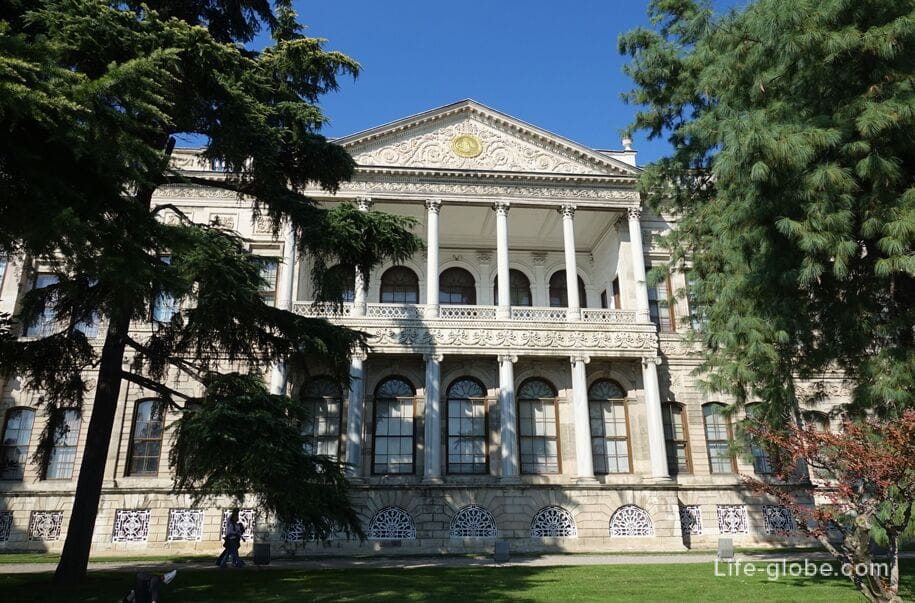

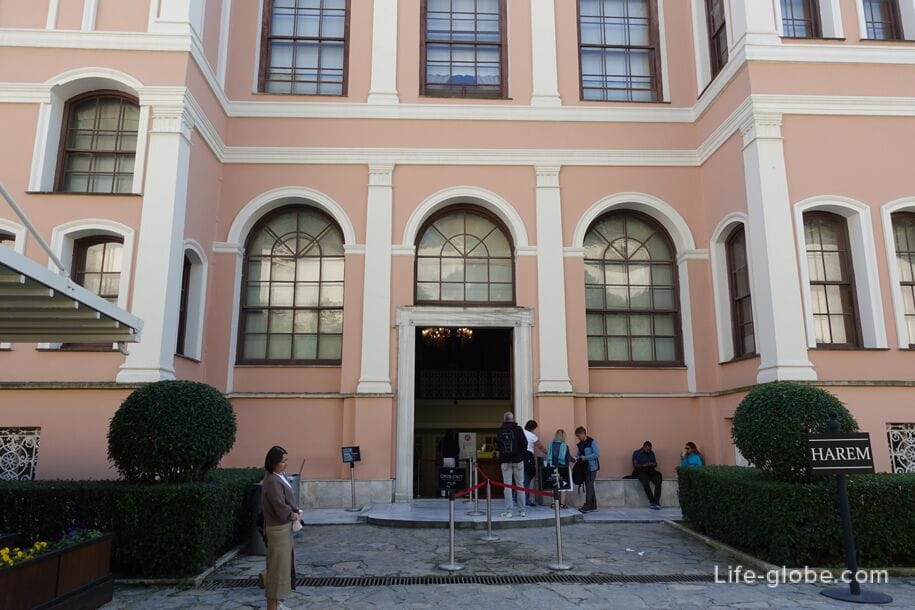
The palace consists of two parts: the official public part of Mabeyn-i Hümayun or Selamlik (Selamlık) with a magnificent Ceremonial (festive) hall (Tören Salonu / Muayede Salonu) and a Harem or family part (Harem).
The halls and rooms of the palace are furnished, there are vases, mirrors, paintings (including a collection of paintings by Aivazovsky), clothes and other interior and household items.
The state was administered in the official part of the palace.
Here is the famous Crystal Staircase, which has the shape of a double horseshoe and is built of Baccarat crystal, brass and mahogany; there are also halls and rooms.
The premises of Selamlik are richly decorated with exquisite samples of Iznik tiles, Ottoman carvings, stoves and crystal.
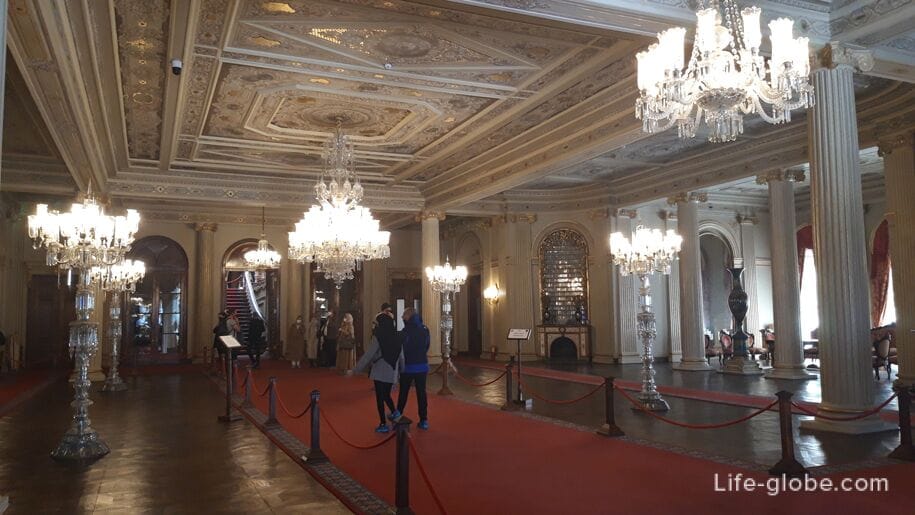
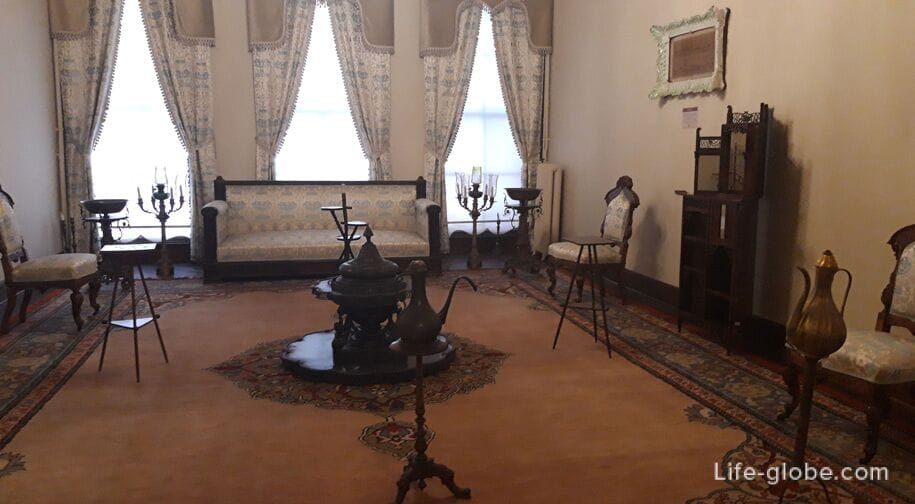

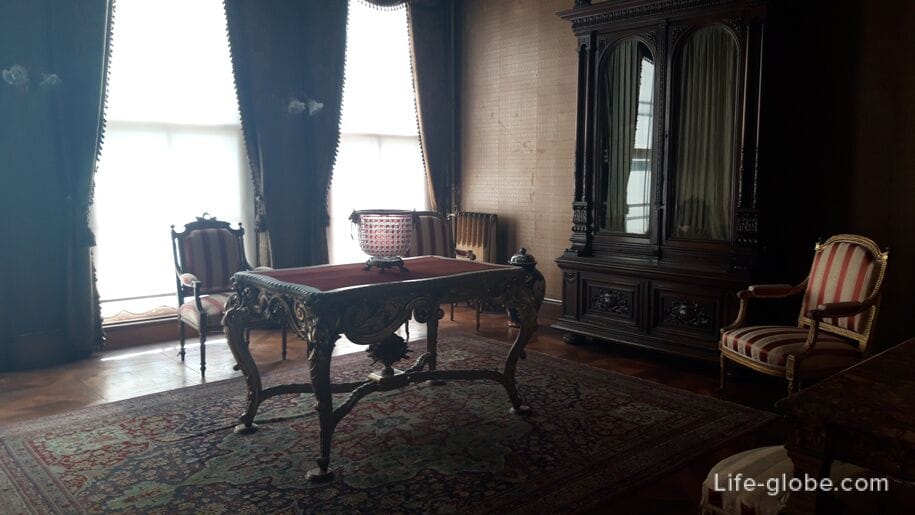
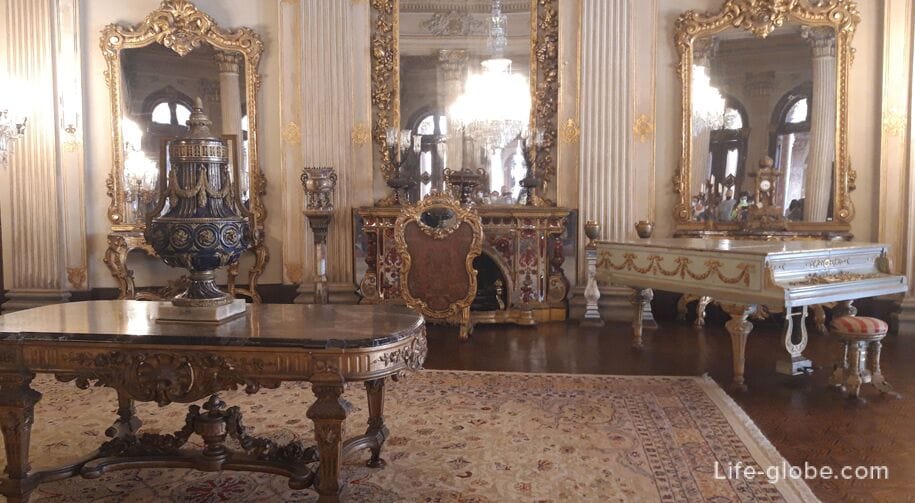

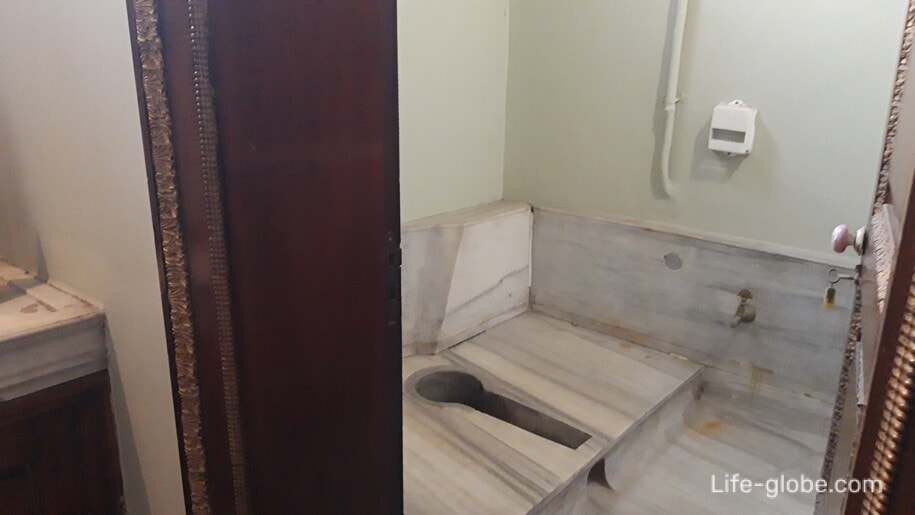
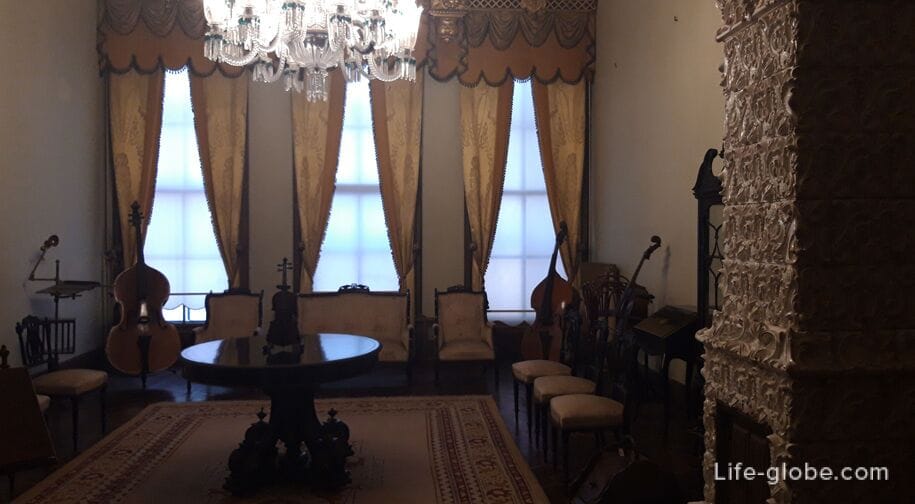

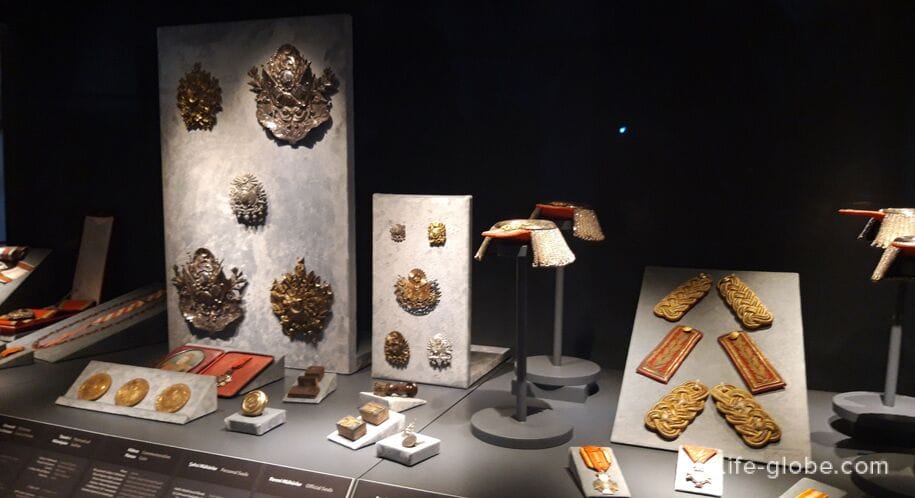
The ceremonial hall, once used for important state ceremonies of the Sultan, and located between the Selamlik and Harem sections, is one of the most beautiful halls of the palace.
The hall is decorated with the largest Bohemian crystal chandelier in the world. It was assumed that the chandelier was a gift from Queen Victoria, but in 2006 a receipt was found indicating full payment for the chandelier. The chandelier has 750 lamps and weighs 4.5 tons.
The floor of the hall is decorated with a large Turkish carpet.
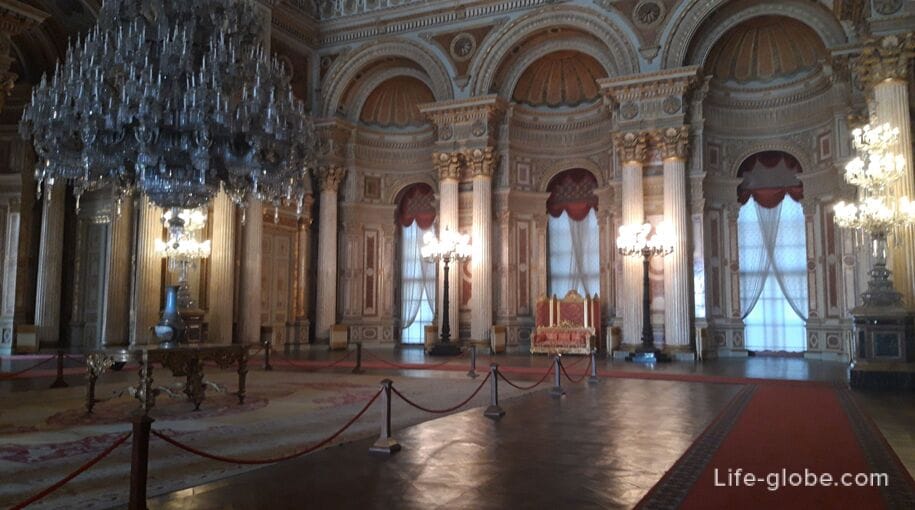
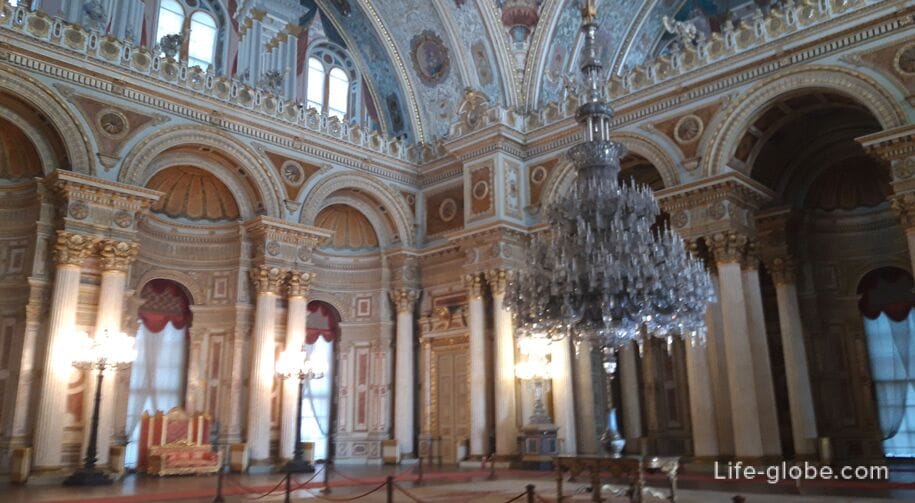
The harem part of the palace was the family section where the personal life of the sultan and his family took place.
There are common halls and living quarters of the sultan, his wives, favorites and concubines, as well as his children and mother.
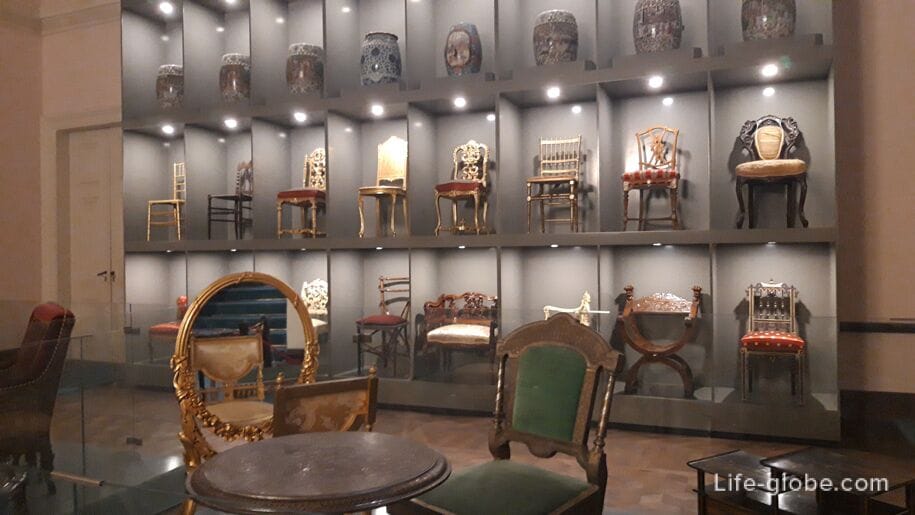
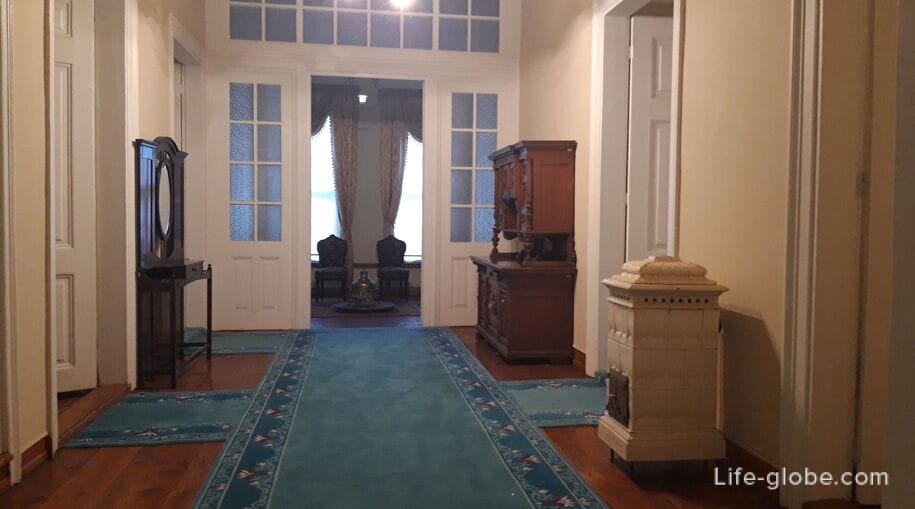

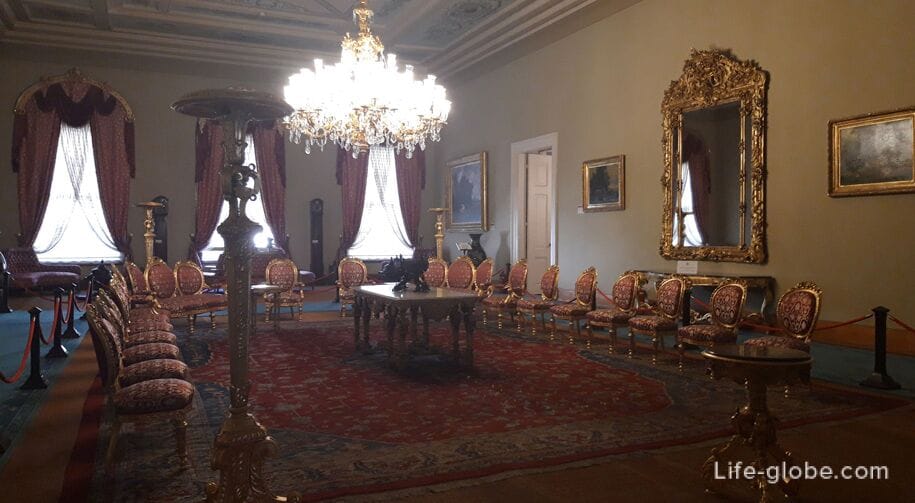


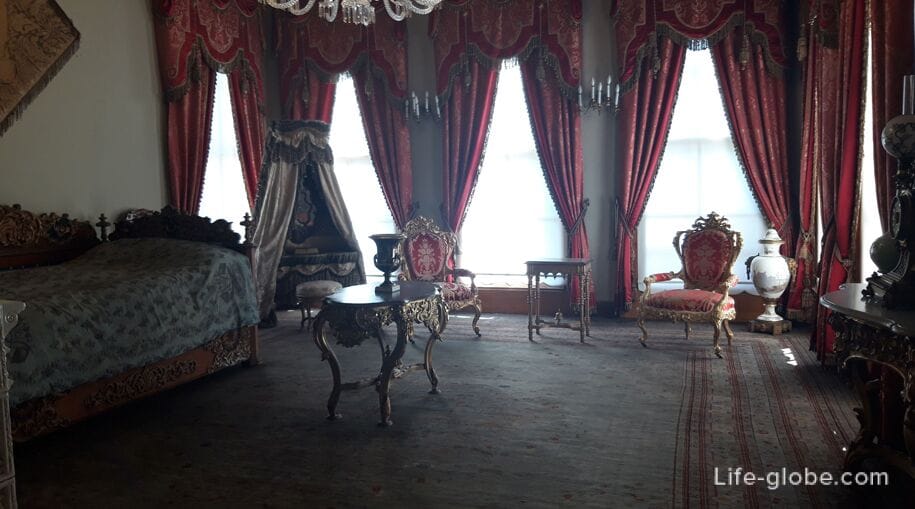
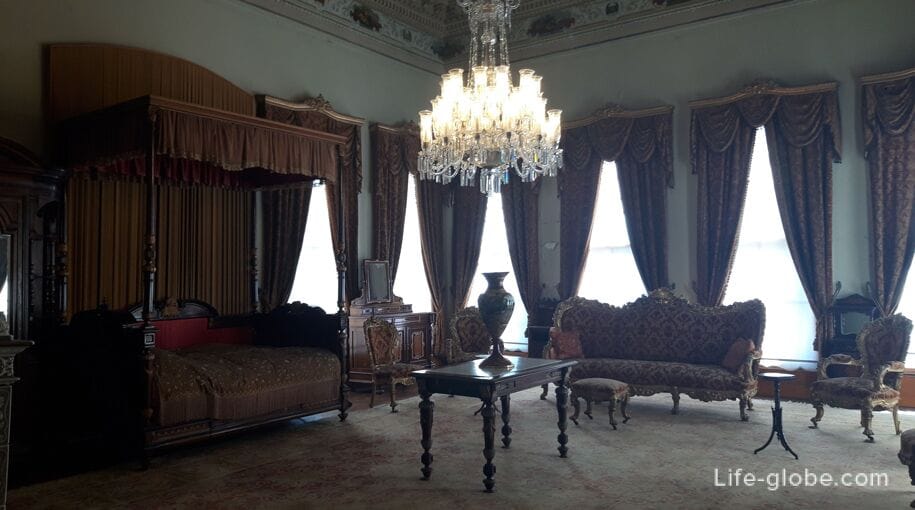
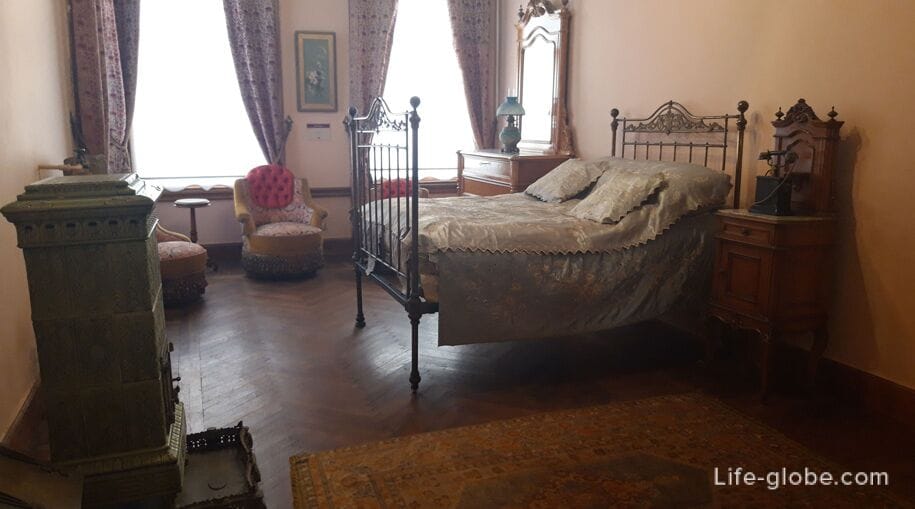
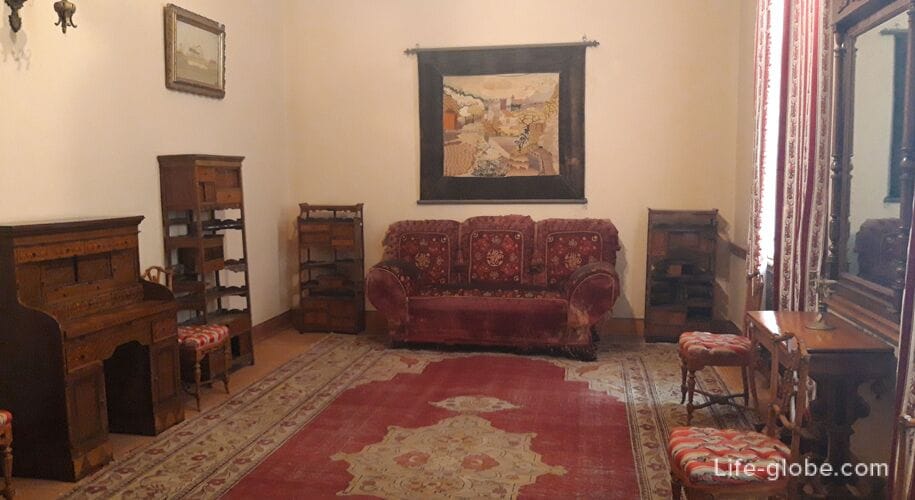
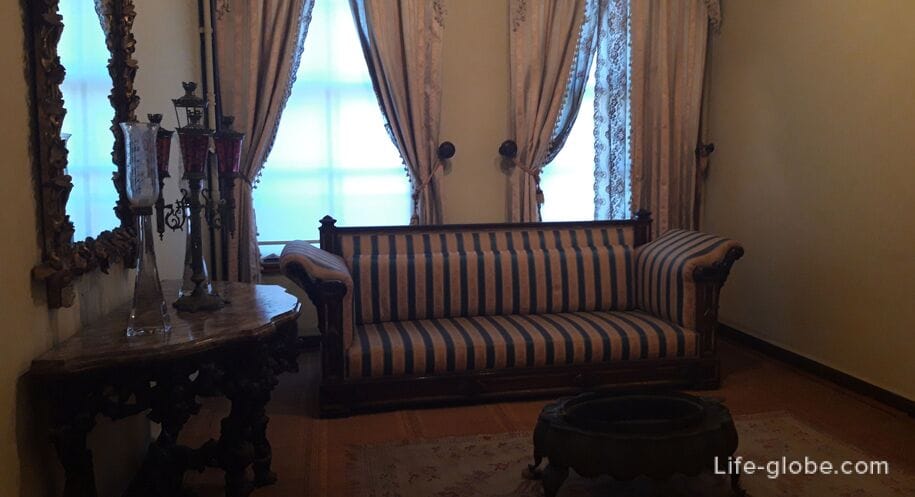
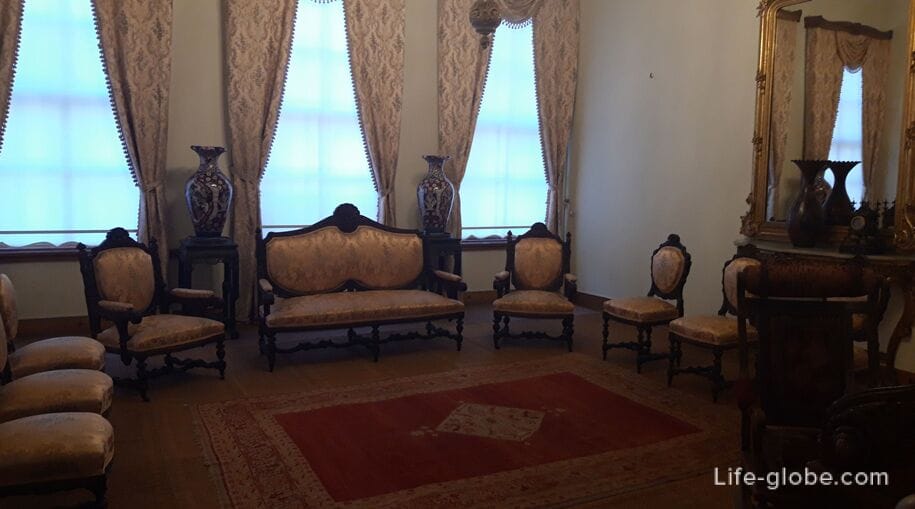
The Dolmabahce Palace complex also includes:
- Museum of Painting and Sculpture (Resim ve Heykel Müzesi);
- the clock museum, located on the garden part of the Harem.
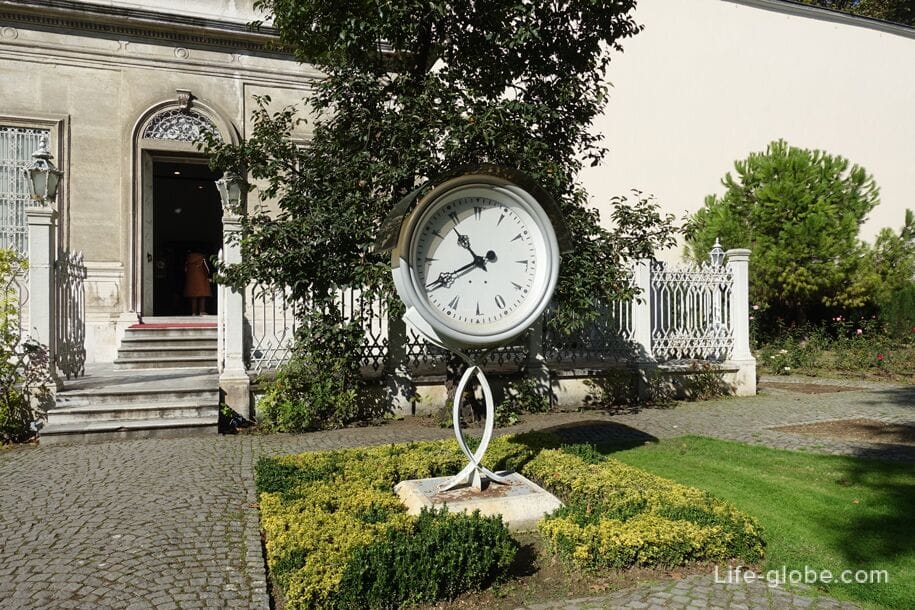
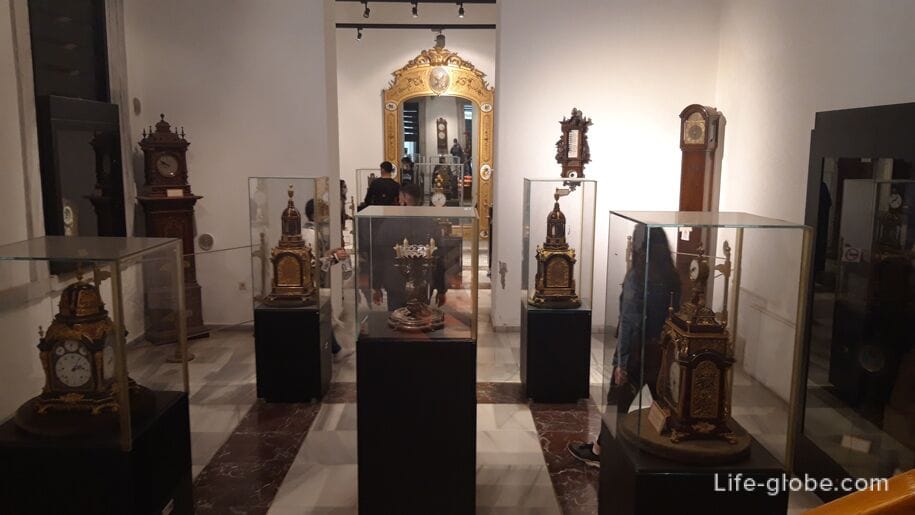

To visit all of the above objects and places of the Dolmabahce Museum-Palace, you need to purchase tickets.
Near the current tourist entrance to the palace (in general access - without charge), there are:
- The clock Tower (Dolmabahçe Saat Kulesi), which was commissioned by Sultan Abdulhamid II and designed by the court architect Sarkis Balyan in the period from 1890 to 1895.
The clock tower was made by the French watch house of Jean-Paul Garnier and installed by the court watchmaker Johann Mayer;
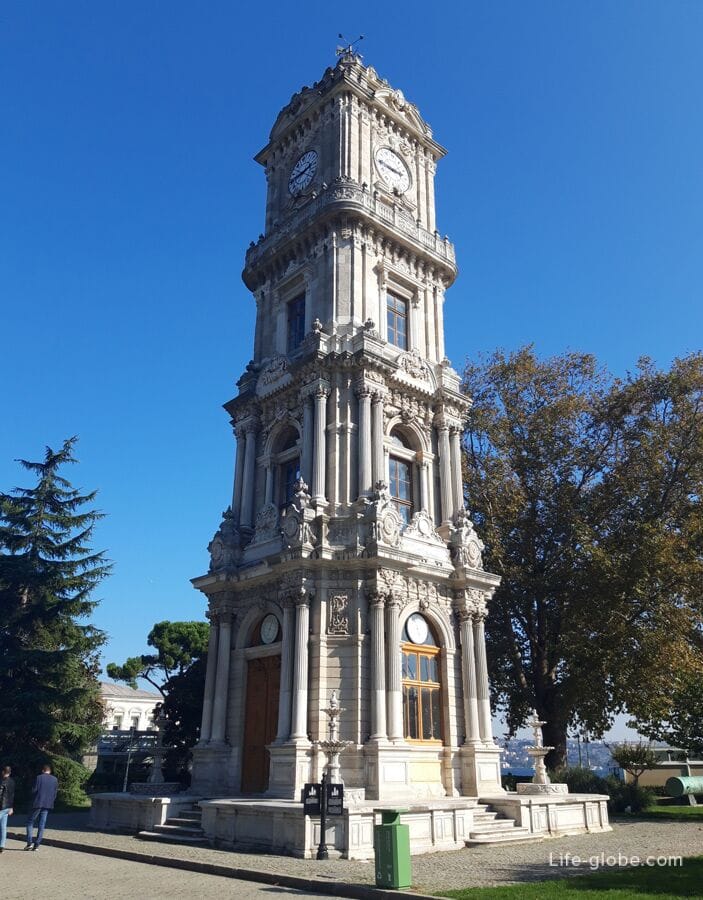
- cafe with a view of the Bosphorus;

- Dolmabahce Mosque (Dolmabahce Camii), built according to the project of Garabet Balyan in 1853-1855. The mosque was commissioned by the Queen mother of Sultan Abdul-Majid I - Bezmlialem-Sultan.
The influence of Baroque and Rococo styles is noticeable in the interior of the mosque.
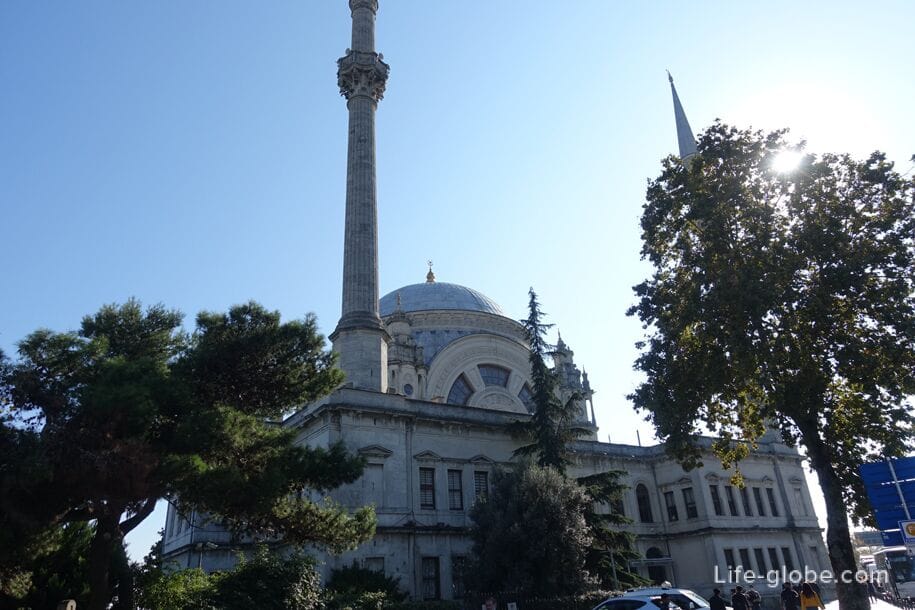

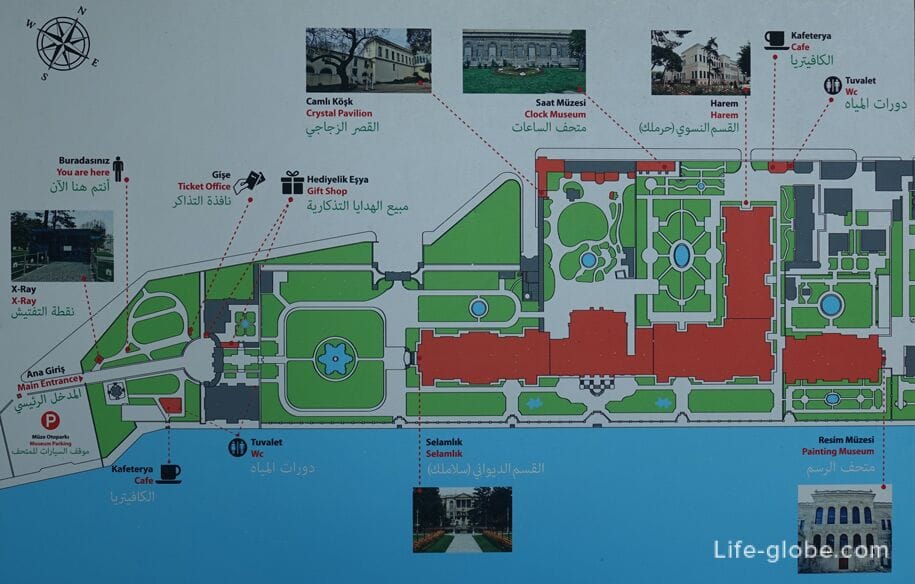
The Museum of Palace Collections (Saray Koleksiyonları Müzesi) is located in the building of the former kitchens of the Dolmabahce Palace and was created by transferring about 20,000 items that the visitor could not see in the furnished rooms of the Dolmabahce Palace.
The main theme of the Museum of Palace Collections is to identify original objects that were used in everyday life in the Ottoman palaces of the 19th century, especially in the Dolmabahce Palace, and in the inventory of national palaces, and make them open to visitors.
Among the exhibited objects: clothing princes and princesses, toys, Handicrafts, stationery used by the sultans, print, epitaphs, samples writing utensils used in the Parliament and the first Grand national Assembly of Turkey, medication, dentist office, shaving sets of silver belonging to the sultans, equipment for cleaning and maintenance of Valide sultans, dishes made of crystal, porcelain and silver, manuscripts of the Koran, carpets Hereke, porcelain Yildiz, watches, porcelain furnace, books from the Palace library, drawing tools and materials belonging to the Caliph Abdulmecid Efendi, a collection of oil paintings, lighting and decorative tools.
Entrance to the museum is paid. It is paid separately from the entrance to the Dolmabahce Palace.
Museum address: Vişnezade, Dolmabahçe Cd., 34357 Beşiktaş/Istanbul, Turkey.
Museum website: saray-koleksiyonlari-muzesi.
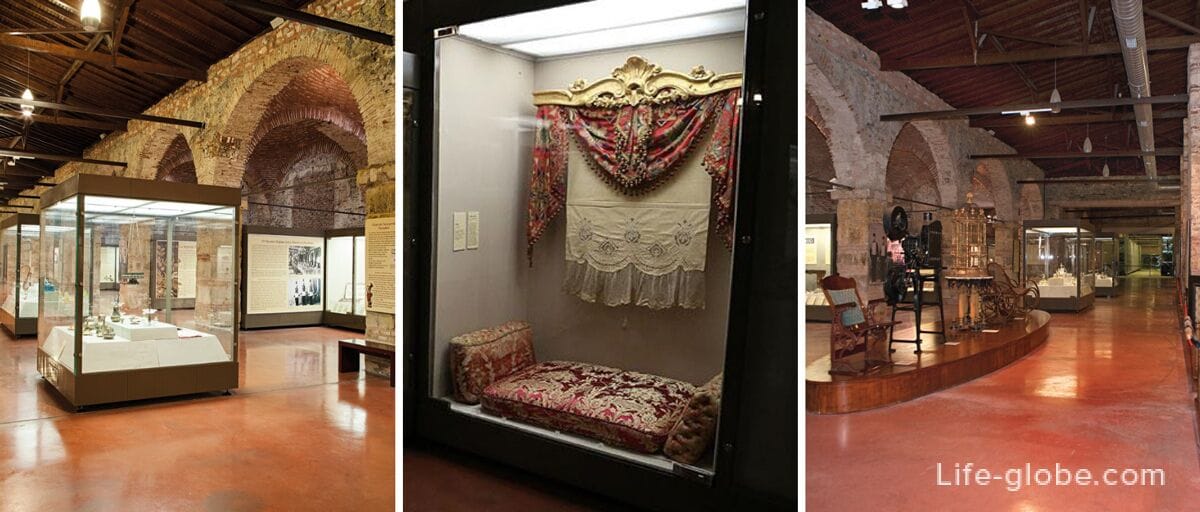

Dolmabahce Palace is located on the European side of the Bosphorus in Istanbul, in the Besiktas district, at the address: Vişnezade, Dolmabahçe Cd., 34357 Beşiktaş/Istanbul, Turkey.
Coordinates of the Dolmabahce Palace Museum: 41°02'22.0"N 29°00'06.0"E (41.039444, 29.001667).
Entrance to the Dolmabahce Palace complex is paid. The ticket offices are located near the entrance (near the Clock Tower).
Tickets can be purchased: only to the official part of the palace, only to the harem, the official part of the palace + harem, the official part of the palace + harem + Museum of Painting and sculpture, only to the Museum of painting and sculpture.
A visit to the palace park and the clock Museum are included in the tickets. You can take an audio guide on bail.
Photo and video shooting is not allowed inside the palace; but it is possible if carefully and imperceptibly (for this reason, the quality of photos of palace interiors in this article suffers).
All information about the Dolmabahce Museum-palace, including opening hours, current ticket prices, etc., we recommend checking before visiting the official website: dolmabahce-sarayi.
You can also see and (or) visit Dolmabahce Palace with one of the excursions in Istanbul
You can get to Dolmabahce Palace by public buses; tram line T1 to Kabatash stop (Kabataş), and then walk along the embankment; from Taksim Square by funicular also to Kabatash stop (Kabataş); ferry to Kabatash (Kabataş) or Besiktas (Beşiktaş) berths, and then walk.
Ferries and funiculars act as public transport. The Istanbul Transport Card is valid in all types of public transport.
You can also get to Dolmabahce Palace by taxi, rented car
Istanbul sightseeing bus tickets are available purchase here →
All accommodation facilities in Istanbul, including in the historical center, on the European and Asian sides of the city, can be viewed and booked here